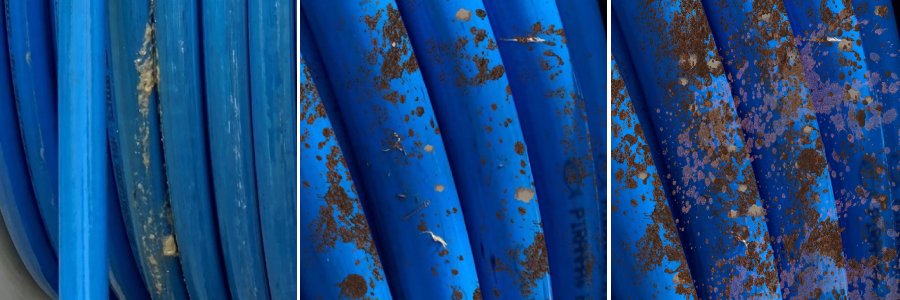-Gathering condition data during the cleaning process engages your crew and provides data on roots, FOG, and debris that can drive operational efficiencies
Section 5 of the NASSCO PACP CCTV data standard provides numerous codes for recording debris, FOG, and root condition data during the CCTV inspection process. When available, this type of data provides a foundation for analytics that can optimize the gravity main cleaning frequencies designed to minimize SSO risk from these issues.
However, there are two key limitations to this operational CCTV data: 1) gravity mains are typically inspected by CCTV only once every 1-5 years, and 2) more importantly, mains are typically cleaned prior to CCTV inspection (to avoid the potential of getting the CCTV camera stuck in the main). With these limitations, there isn’t enough operational data from CCTV to enable sophisticated analytics such as machine learning.
How can a collection system gather more operational data in sufficient quantities to enable sophisticated gravity main cleaning analytics? The answer is down the manhole during the cleaning process itself.
Collection systems clean all gravity mains once every 1-5 years – accessing the mains for cleaning far more often than for CCTV inspection. Cleaning crews watch the flow pass through the manhole during the cleaning process, and remove debris or roots as needed. This presents the opportunity to engage the crew and their observational skills to collect condition assessment data during the cleaning process.
For any gathered data, a standard that is both workable for the crews, and provides condition scoring/rating consistently is required. V&A has created and released just such a cleaning condition index.
On April 6th we announced the release of our proprietary VANDA® Gravity Main Cleaning Index. We created the VANDA® Gravity Main Cleaning Index to address a need our engineers recognized in wastewater and SSOs events. This index is designed to provide a standard for recording condition assessment data during gravity main cleaning on an objective criterion presented via the index.
At V&A, we invest in water and wastewater treatment progress by leveraging best-practices that are proven effective through data analytics. We developed the Gravity Main Cleaning index to be the standard rating methodology for machine learning need-for-cleaning predictions (characterized as LOF—likelihood of failure) to establish a true data source for layered analysis and reporting. Ultimately, we want to support municipalities in optimizing their cleaning operations and become more effective in meeting the needs of their community.
We understand the pressure that local municipalities are experiencing in supporting their constituency in avoiding SSOs. We designed our VANDA® Index to address the pain points for operators and the maintenance team.
Pain Points for Wastewater Operators and Maintenance Teams:
· Inconsistent rainfall and extreme weather conditions
· Stringent SSO reporting requirements
· Population growth and new users
· Competing priorities for cleaning and maintenance response
V&A’s Gravity Main Cleaning Index Condition Samples
Our goal in developing the VANDA® Gravity Main Cleaning index is to provide a consistent visual reference and scale when examining gravity mains in one handy tool. With the average municipality experiencing anywhere from 25-75,000 SSOs per year on average, there is a good deal of data that can be helpful in making more calculated maintenance plans when collected and reporting using consistent criteria.
The example images are from the perspective of an operator looking down the sewer main and the cleaning hose during cleaning from light to heavy FOG (fats, oils, grease), roots, and other debris.
Light Condition Sample Images:
Moderate Condition Sample Images:
Heavy Condition Sample Images:
Training for Operators
The VANDA Index can be used as a training tool for operators. Consider introducing your teams to the index as a part of their cleaning operations.
· Gives operators and maintenance crews a reference to consistently assess gravity main conditions.
· Gives visual and olfactory references for condition assessment
· Reduces scale inconsistency by providing a 10-ich ruler
· Clip into a notebook for easy access during field operations (shown below)
Especially for operators new to maintenance and cleaning, the VANDA Gravity Main Cleaning index is a good reference for conditions.
The index supports consistent reporting of gravity main conditions. Cleaning plans can continually gain efficiency with simple steps to data gathering and analysis.
Read more about our Data Science services and the VANDA Gravity Main Cleaning Index.





